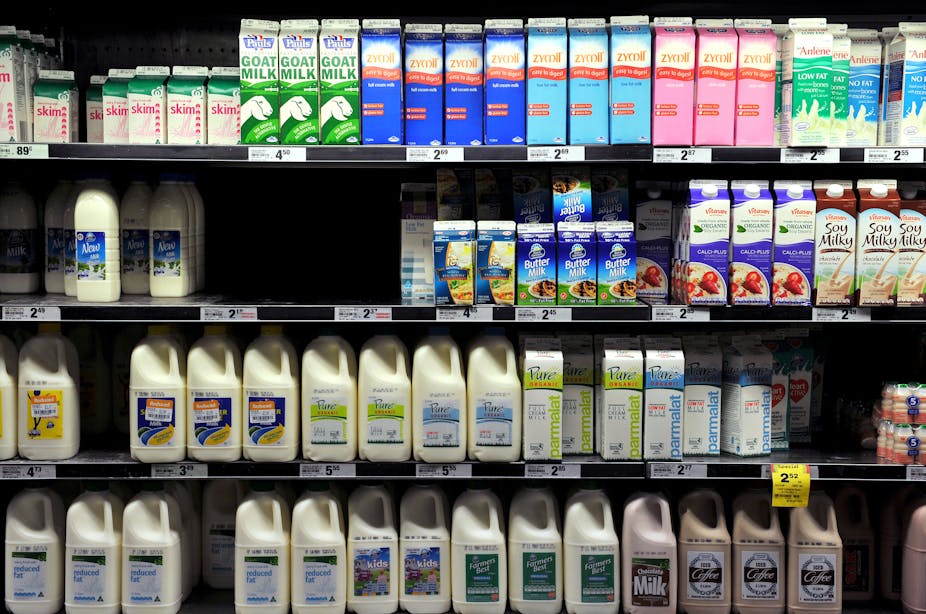Only a few years ago jokes about home brand products were quite common. Having a blue and white or red and white dinner meant enjoying generic brand fare that night around the table.
But the recent intensification of the supermarket wars has seen the introduction of more sophisticated and aggressive branding strategies by Coles and Woolworths.
Most recently the retail war went to another level with Woolworths signing a 3 year private label bread deal with current private label supplier George Weston Foods, which gives both supplier and retailer more certainty in their marketing and operations strategies.
The supermarket war has never just been about the market share held by Coles and Woolworths. It has also been the perfect opportunity for the retailers to attack premium or name brands by introducing several brands in many categories.
And brand name producers, aware of the growing difficulties of competing against supermarkets, are quietly tweaking their business models.
More recently introduced generic products look and taste nearly the same as the premium brand offerings, but with a significant price advantage. In other words, they are copy cats, trying to take advantage of the minor but noticeable difference and the differential threshold that exists in all of us and in all products we consume. That is, if we can notice this difference, then we will probably also notice the difference in price, product, place and promotion between brands as well.
The supermarkets aim to steal market share from premium bands and move to an overall market share of roughly 20-25% for home brand products in each category. Some have predicted this may even rise to 40-50% by 2020.
This would mean billions in new revenue for the supermarkets, and with an increased market share, more influence to put pressure on the margins of the name brands. The viability of name brands depends on wide profit margins – if they go so can entire product lines.
Without that profit, these companies are not able to invest in new production technologies, premium product ingredients or the marketing that helps differentiate their brands from others.
Don’t fight it, feel it
Name brand producers are now realising that home brands will not cede market share quickly. Competing directly with new premium home brand offerings could mean a lengthy price war with an uncertain result.
Instead, another solution has dawned: the business model is being adapted to accommodate making home brand products for supermarkets and then offering a premium brand.
By controlling the production of the home brand, these producers can also make sure it tastes significantly different to the premium brand offering, which makes up most of their market share. Some consumers will always prefer, and pay for, the taste of the name brand over that of the home brand.
Producers make money two ways – profits on margin and profits on turnover. Rarely is both possible. But by producing the supermarkets’ home brand products alongside its premium offering, name brand manufacturer can make the margin profit on the name brand product, keep the brand value high on the books, and make a nice profit from a high volume, low margin strategy on the home brand product.
This model makes it difficult for other name brand producers to knock the company out of the market because of the strength in volume and in margins, even if the margin strategy is essentially a niche offering.
This means supermarkets are now some producers’ best friends, giving them the opportunity to not just access the market but to also make profit two ways without harming the name brand.
Such good friends
For supermarkets, this change has meant a greater control in the supply chain than ever before as suppliers now no longer see them as competitors but very valuable customers. They can start raising the margins and volume as new generic brand product lines are introduced, stretching further and deeper into key categories.
This makes home brands very valuable customers of the suppliers. Retail outlets with already very small market share such as Aldi and Metcash, will be placed under further pressure on prices as the larger retailers can use volume and margin to target them, even if they introduce their own generic brands or use unknown brands to take market share at the low end of the price spectrum.
Core ingredient suppliers like farmers will also feel sustained pressure on their own margins as long-term contracts give very little room to move and not much incentive to invest in their business operations.
Then there is the danger of the taste between name and home brands no longer being able to be discerned or noticed by consumers, which would mean at the end of the day that price would probably win and therefore the home brands would obliterate most of the share of the name brands.
And for us humble consumers? Well whilst we still remain loyal to the name brands by nearly two thirds, more and more are willing to put up with a “close enough is good enough approach” that will see the continued growth of the generic brands.

